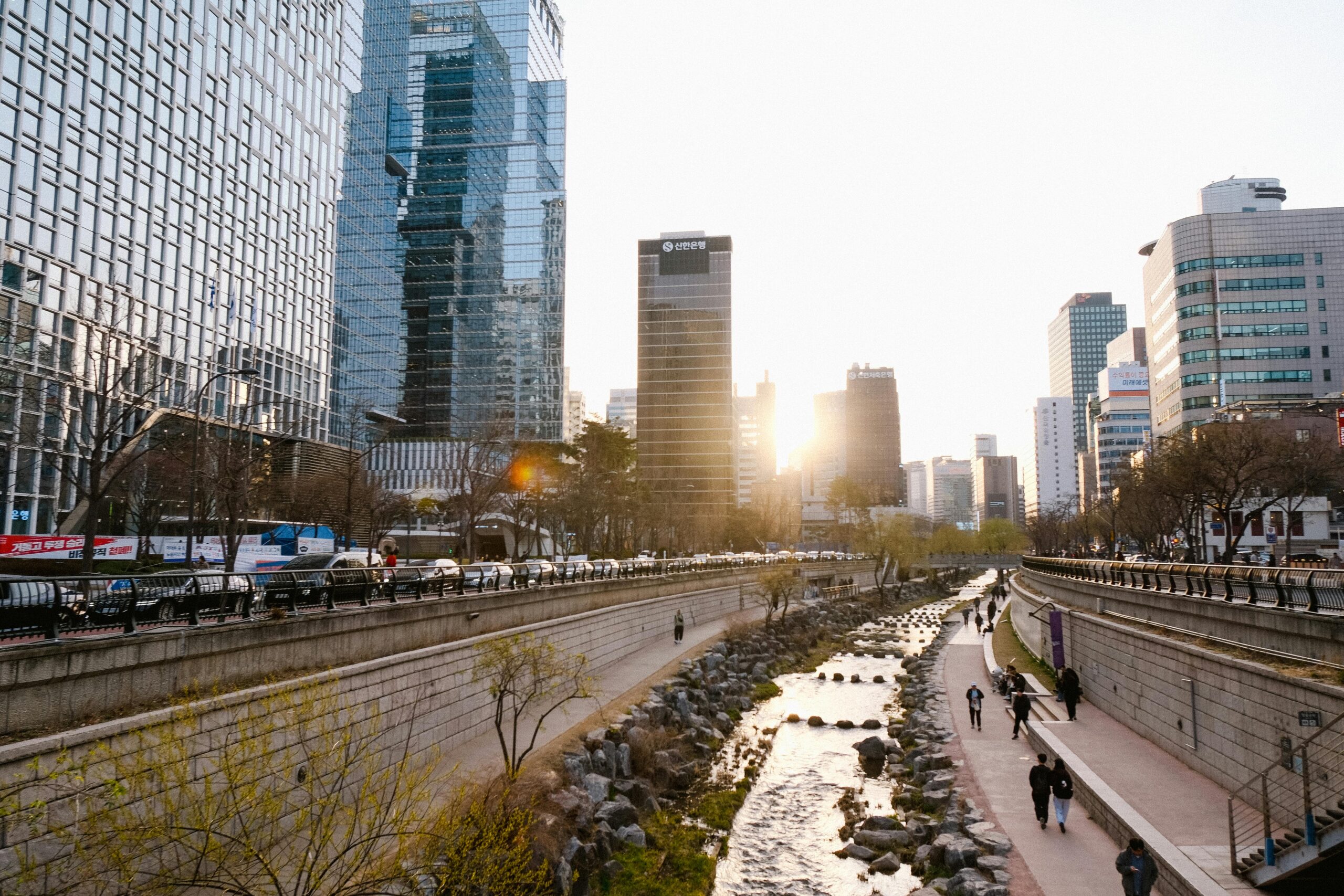Reviving an Urban Lifeline: The Story of Cheonggyecheon Stream
Situated at the heart of Seoul, Cheonggyecheon Stream is more than just a waterway; it is a testament to South Korea’s commitment to urban renewal and sustainable development. Once buried beneath concrete and overpasses, this stream has experienced a dramatic transformation, evolving from a neglected drainage channel into a vibrant ecological and cultural landmark. This article explores the rich history, environmental significance, urban planning innovation, social impact, and future prospects of Cheonggyecheon, revealing how a simple stream has become an emblem of urban harmony and revitalization.
The Historical Journey of Cheonggyecheon
Cheonggyecheon’s story begins centuries ago as a natural stream flowing through the city, offering irrigation and a fresh water source. However, with rapid industrialization and urban expansion during the 20th century, the stream was covered over in the 1950s, replaced by roads and elevated highways to accommodate Seoul’s growing traffic demands. For decades, the stream was all but forgotten, relegated to an underground sewer system and symbolizing unchecked urban sprawl. The decision in the early 2000s to uncover and restore Cheonggyecheon marked a pivotal moment, challenging prevailing urban design ideas and sparking one of the world’s most ambitious ecological restoration projects.
Ecological and Environmental Significance
The restoration of Cheonggyecheon brought significant environmental benefits. By removing pavements and highways, natural habitats were reintroduced, promoting biodiversity within an otherwise dense urban area. The stream now supports a variety of aquatic life, bird species, and native plants, creating a green oasis that helps mitigate the urban heat island effect. Furthermore, Cheonggyecheon plays an important role in natural water management by improving groundwater recharge and reducing flood risks. This ecological rehabilitation demonstrates how urban landscapes can be designed to enhance environmental health without sacrificing urban functionality.
Urban Planning Innovation and Design
The Cheonggyecheon restoration is widely regarded as a pioneering example of urban ecological design. Spearheaded by a visionary plan, the restoration involved dismantling a 5.8-kilometer elevated highway and reconstructing the stream beneath. The project integrated modern engineering with the preservation of historical elements, such as restored stone bridges and traditional stepping stones, evoking the area’s heritage. The design promotes pedestrian accessibility and connectivity, providing a linear park that links neighborhoods and commercial districts. Importantly, it set a precedent for cities worldwide seeking to balance infrastructure with green urbanism.
Societal and Cultural Impact
Beyond its environmental and aesthetic values, Cheonggyecheon has become a vibrant social hub that fosters community interaction and cultural expression. The stream hosts various public events, artistic installations, and festivals that celebrate Korean heritage and contemporary creativity. It offers respite from the urban bustle, attracting locals and tourists alike to stroll along its paths, fish, or simply relax. The revitalization project also stimulated economic activity by boosting nearby businesses and increasing property values, demonstrating how ecological restoration can intertwine with social and economic benefits in a densely populated city.
Looking Ahead: The Future of Cheonggyecheon
Cheonggyecheon’s success inspires continued conversations about sustainable urban development, resilience, and climate adaptation in Seoul and beyond. Future plans include enhancing water quality through advanced filtration techniques and expanding green infrastructure adjacent to the stream. As cities worldwide confront challenges of climate change, pollution, and overpopulation, Cheonggyecheon stands as a shining example of how urban waterways can be preserved and celebrated. Its ongoing stewardship will require collaborative efforts among government, communities, and scientists to maintain its ecological health and social vibrancy for generations to come.
In reflecting on Cheonggyecheon’s remarkable transformation, it becomes clear that urban renewal goes beyond concrete and steel—it is about reconnecting people with nature and their history. This stream’s resurgence embodies a harmonious blend of environment, culture, and innovation, illustrating a path forward for sustainable and livable cities. Cheonggyecheon reminds us that even small natural elements, when nurtured thoughtfully, can generate profound impacts on urban life and identity.
